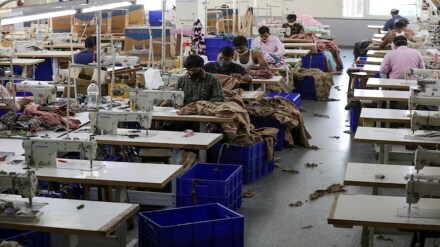By Ashok Gulati, Sulakshana Rao & Riya Jain
On May 6, India and the UK concluded a landmark free trade agreement (FTA), marked as a historic milestone by Prime Minister Narendra Modi. The deal grants India zero-duty access to all industrial goods and eliminates import tariffs on over 99.3% for animal products, 99.8% for vegetable/oil products, and 99.7% for processed foods. Currently, the UK imports goods worth $815.5 billion, primarily from countries like China (12%, $99 billion), the US (11%, $92 billion), Germany (9%, $76.2 billion), etc. (ITC Trade Map). India is its 12th largest trading partner with a share in the UK’s goods imports of a meagre 1.8% ($15.3 billion). On the other hand, the UK exports goods worth $512.9 billion, mainly to the US ($71.3 billion), China ($46.4 billion), and Germany ($38.8 billion).
As of 2024, India-UK trade in goods stands at $23.3 billion. The UK imports $15.3 billion worth of goods from India and exports $8.06 billion worth of goods (ITC Trade Map, 2024). It largely exports pearls, nuclear reactors, spirits, vehicles, etc. to India, and imports machinery, mineral fuels, pharmaceuticals, apparel, and footwear, etc. The FTA has set an ambitious target of taking the trade partnership to $120 billion by 2030.
But how will this leap happen? For the FTA promise to translate into real gains, trade must open both ways. India is willing to let British whisky and gin flow more freely, cutting tariffs from 150% to 75%, and further down to 40% over the next 10 years. Also, British cars can run on Indian roads with a tariff slashed from 100% to just 10%. On the other hand, India can gain in labour-intensive sectors like footwear, toys, and textiles and apparel (T&A). T&A is of particular interest to India as it employs over 45 million workers, and access to high-end markets can benefit those engaged in this value chain.
To make this happen, India needs to stitch many loose ends in its T&A value chain, especially fashion, to design high-value apparel products for the UK market.
The UK imports T&A valued at $26.9 billion, of which apparel makes up $19.6 billion (72.8%). Its apparel imports are primarily from China (25% share, $4.9 billion), followed by Bangladesh (20%, $3.9 billion), with India accounting for a meagre 6% ($1.19 billion). So far, the UK imposed average tariffs of 11-12% on apparels from major importing countries. With the FTA, India gets preferential treatment with zero-tariff entry which can be a game changer vis-à-vis its competitors. To take advantage of this, we need to set a few things in order in the T&A value chain.
India’s T&A sector has three structural challenges. First is the fragmented manufacturing base, with micro, small, and medium enterprises operating in silos across states. Second is the disjointed value chain. Cotton is grown in states like Gujarat and Maharashtra, yarn is spun in Tamil Nadu, fabric is processed in other parts, and garments are stitched across India. This geographical dispersion raises logistics costs and causes delays — a lead time of 63 days from order to delivery, compared to 50 days in Bangladesh (Bangladesh Garment Manufacturers and Exporters Association, 2022). Third, India’s policies on man-made fibres (MMF) lag global preferences, hampered by an inverted goods and services (GST) structure and restrictive quality norms.
To address these issues, India must move swiftly on three fronts — policy, practices, and products — to realign the sector with global market demands. On the policy front, the first and foremost priority is the swift operationalisation of PM MITRA (Mega Integrated Textile Region and Apparel) parks, particularly in Navsari (Gujarat) and Virudhunagar (Tamil Nadu), focused on exports. Simplification, consolidation, and elimination of compliance-heavy processes for exporters is a low-hanging fruit. Rationalising the GST duty structure in MMF textiles is another immediate requirement. Currently, fibre inputs are taxed higher than the finished products, making Indian MMF garments uncompetitive. Building on the FTA momentum, India must put its T&A sector at the forefront in trade negotiations with the European Union (EU) and the US, which are the biggest apparel importers. The EU imports $193.6 billion worth of apparel, with competitors like Bangladesh and Vietnam enjoying duty-free access. Similarly, the US ($83.6 billion) is presenting a rare window of opportunity, having effectively vacated Chinese dominance (22% share) through the imposition of high reciprocal tariffs. Securing zero-duty access to these high-value markets can be a boon for India’s T&A sector.
In terms of practices, India must embrace fashion lines to match global aesthetics. Another area to focus on is compliance. For example, with the EU implementing Corporate Sustainability Due Diligence Directive by 2029, Indian suppliers need to embed ESG (environmental, social, and governance) compliance, traceability, and green audits into their supply chains.
Finally, on the product front, India must scale up towards value-added products like activewear, athleisure, and technical textiles, dominated by MMFs. Indian firms also need to invest in functional and performance fabrics and develop capabilities to plug into global retail supply chains.
Once the heart of the global T&A industry, the UK with Lancashire mills and James Hargreaves’ Spinning Jenny weaved in an industrial revolution that dismantled India’s traditional spinning hubs. Today, in a historic reversal, India could be a major supplier of T&A to the UK, bringing the trade relationship full circle.
The India-UK FTA also offers a timely blueprint for ongoing trade negotiations with the US and the EU. But deals alone will not suffice. We must reimagine India’s textile future through integrated hubs, modern manufacturing, compliant supply chains, and demand-driven exports. The opportunity is massive, but so is the urgency. As the saying goes, a stitch in time saves nine. And for India’s textile sector, this is that critical stitch.
The writers are respectively distinguished professor, senior fellow, and research assistant at ICRIER.
Disclaimer: Views expressed are personal and do not reflect the official position or policy of FinancialExpress.com. Reproducing this content without permission is prohibited.
